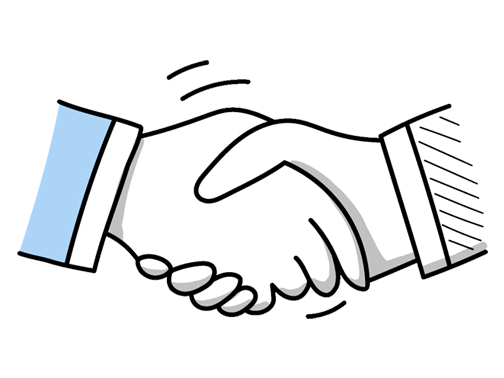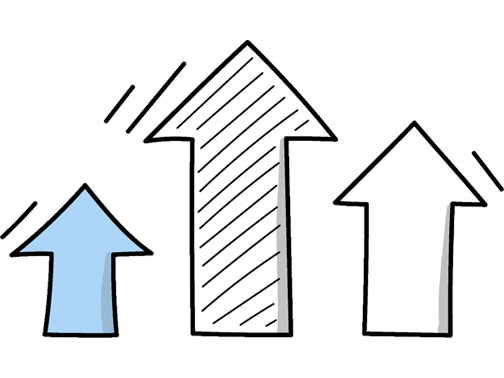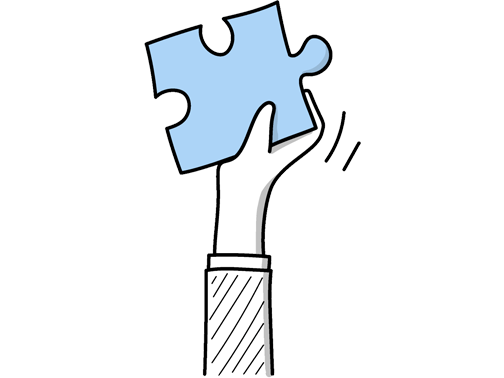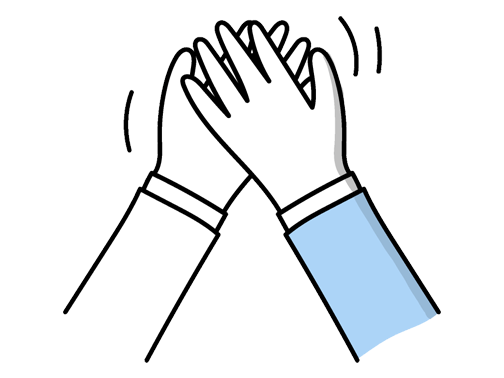Structural Steel Fabricator Interview Questions (2025 Guide)
Find out common Structural Steel Fabricator questions, how to answer, and tips for your next job interview
Practice Interviews Online - Identify your strengths and weakness in a realistic Structural Steel Fabricator mock interview, under 10 minutes
Practice Now »Structural Steel Fabricator Interview Questions
This question is designed to confirm that you have the necessary qualifications and skills for the job. You need to clearly state your relevant certifications and training, then briefly explain how you've applied them in your work to ensure quality and safety.
Example: I hold a CSCS card and have completed NVQ Level 2 in Fabrication and Welding, which gave me strong practical skills with steelwork. I’ve also attended specialized courses in welding techniques and site safety. These qualifications have helped me deliver precise, high-quality fabrications safely and efficiently, like when I led the steel assembly on a recent bridge project, ensuring everything met strict standards and deadlines.
This interview question aims to understand how you manage your time and make decisions when pressure builds from multiple deadlines. You need to explain how you organize tasks with schedules or lists, assess and adjust priorities logically, and keep your team informed about your progress.
Example: When I’m juggling several deadlines, I first assess which tasks have the most immediate impact or depend on others to move forward. I break down each job into manageable steps and keep clear communication with my team to avoid overlap or delays. For example, in a recent project, coordinating early with the welders helped us finish critical sections on time without rushing at the end. This approach keeps everything on track and the quality consistent.
Employers ask this question to see how you maintain quality and prevent costly errors in your work. You need to explain that you always double-check measurements using multiple tools like a tape measure and laser measure, use calibrated tools or jigs for precision cuts, and re-measure if anything seems off before continuing.
Example: To keep measurements spot on, I always measure twice before making any cuts, using reliable tools like laser measures and steel rulers. During cutting, I make sure to clamp materials firmly to avoid any movement. If something doesn’t quite add up, I pause and recheck everything rather than guess—once, this saved a batch from being scrapped, which could have been costly. Attention to detail is key in our line of work.
Questions like this assess your hands-on experience and familiarity with essential equipment. You need to clearly name the tools and machines you’ve used confidently, showing your practical skills and safety awareness.
Example: I’m very comfortable working with cutting and grinding tools like oxy-acetylene torches and angle grinders, which I use regularly for shaping and finishing steel. I also have solid experience operating welding machines, particularly MIG and arc welders, ensuring strong, precise joins. Beyond that, I’m familiar with cranes and hoists for moving heavy materials safely around the workshop. These tools are essential in delivering quality fabrications efficiently.
This interview question assesses your understanding of workplace safety and your commitment to preventing accidents. You need to explain how you consistently use PPE, inspect your work area for hazards before starting, and communicate safety concerns openly with your team.
Example: I make sure to follow all site safety rules and keep an eye out for potential risks before starting any job. If I spot anything unsafe, I address it right away or bring it up with the team. Good communication is key, so I regularly check in with colleagues to ensure everyone is working safely and has the right equipment. Last week, noticing a loose bolt, I stopped work until it was fixed, preventing a possible accident.
What they want to know is your practical experience and the variety of steel fabrication projects you’ve handled, showing your skill level and adaptability. You need to clearly mention specific types of projects like commercial buildings, bridges, or industrial structures, highlighting your role and key tasks in each.
Example: I’ve worked on a variety of projects, ranging from commercial buildings to bridges. For example, I was involved in fabricating steel frames for a new office block and also worked on reinforcing structures for a pedestrian bridge. Each project taught me different techniques and the importance of precision and safety in structural steel fabrication.
This interview question is designed to see if you actively keep up with important safety rules to protect yourself and others on site. You should say that you regularly attend safety trainings, stay informed about UK regulations like CDM and British Standards, and share updates with your team through toolbox talks or briefings.
Example: I regularly review updates from the Health and Safety Executive and industry bodies to stay informed on new regulations. At work, I share relevant changes with the team during safety briefings and encourage open discussions to ensure everyone understands them. I’ve found this approach helps us maintain a safe environment and keeps safety at the front of all our daily tasks.
This interview question is designed to assess your problem-solving skills and how you handle pressure in your work. You need to clearly explain the specific challenge you faced, the steps you took to address it, and the successful outcome you achieved.
Example: One project involved fabricating a complex steel frame with tight deadlines and unforeseen design changes. I stayed in close communication with the engineers and adjusted our workflow to accommodate updates without compromising quality. By prioritising teamwork and flexibility, we met the deadline and maintained safety standards. It was a good reminder that adaptability and clear communication are key when working on demanding builds.
Interviewers ask this question to ensure you can accurately understand and apply detailed plans essential for safe and precise steel fabrication. You need to explain your experience identifying blueprint symbols and measurements, how you used these drawings to assemble steel components, and how you communicate with engineers when details are unclear.
Example: Yes, I’m comfortable working with blueprints and technical drawings. In my previous role, I regularly translated detailed symbols and measurements into precise fabrication work. When something wasn’t clear on a drawing, I’d collaborate with engineers or supervisors to clarify details, ensuring accuracy and preventing errors. This hands-on experience has sharpened my ability to turn drawings into reliable, safe steel structures.
What they want to know is whether you have the specific welding skills needed for the job and if you can work safely and efficiently with different materials. You should clearly state the welding techniques you know, like MIG, TIG, or stick welding, and briefly mention any experience or certifications you have with them.
Example: I’m experienced with several welding methods, mainly SMAW and MIG, which I find reliable for structural steel projects. I’ve also worked with TIG welding when precision is critical, like on thinner materials or detailed joints. These techniques have allowed me to ensure strong, clean welds that meet safety standards, especially on bridges and steel frameworks. Each method has its place depending on the job’s demands.
Questions like this assess your teamwork and communication skills, which are crucial for coordinating precise tasks in structural steel fabrication. You should say that you listen actively by confirming understanding, communicate instructions clearly by simplifying complex steps, and encourage open dialogue so everyone feels comfortable sharing feedback.
Example: To keep communication effective, I make sure to really listen when others are sharing their ideas or concerns, so nothing gets missed. I focus on being clear and straightforward when passing on instructions, avoiding confusion. Creating an atmosphere where everyone feels comfortable speaking up is important too—like during team breaks, encouraging feedback helps us catch issues early and work more smoothly together.
Interviewers ask this question to see how you handle problems under pressure and ensure the project stays on track. You need to say that you quickly assess the issue to find the root cause, implement a practical solution to keep work moving, and document the experience to avoid future problems.
Example: When unexpected problems come up, I first take a moment to understand exactly what's causing the issue. Once I know that, I focus on finding a sensible fix that keeps the project moving without too much downtime. Afterward, I review what happened to see how we can avoid similar setbacks in future jobs. For example, on one project, a sudden design change meant quick adjustments—so learning from that helped us improve our communication process.
Interviewers ask this to see how methodical and proactive you are in solving problems that could disrupt work. You need to say you first identify the exact issue by observing symptoms, then investigate using manuals or tools, and finally fix the problem efficiently while taking steps to prevent it from happening again.
Example: When I notice something off with machinery or tools, I first take time to pinpoint exactly what’s wrong. I then carefully check the equipment, looking for any obvious faults or unusual signs. If needed, I consult manuals or colleagues to understand the issue better. Once fixed, I make sure to carry out tests and routine checks to avoid the same problem happening again—like when I once diagnosed a misaligned steel cutter that was causing delays.
What they want to know is that you can spot dangers before they cause accidents and that you take quick, proper actions to fix them following company rules. You need to explain a specific hazard you noticed, how you reported or fixed it promptly, and how you followed safety protocols to keep everyone safe.
Example: During a previous project, I noticed a loose scaffold board that could easily shift under weight. I immediately stopped work in that area and reported it to the site supervisor. We replaced the board and double-checked surrounding equipment before resuming. Following company safety procedures is crucial, and I always stay alert to potential risks to ensure everyone goes home safe at the end of the day.
Hiring managers ask this question to ensure you prioritize safety and understand essential protocols when handling heavy machinery. You need to say that you follow HSE guidelines, conduct equipment checks before use, and always wear the correct PPE like helmets, gloves, and safety boots to minimize risks and protect yourself and others.
Example: When working with heavy machinery, I always start by checking that everything is in good working order and that the area is clear of hazards. I follow all the guidelines set out by the site health and safety standards and make sure I’m wearing the correct protective gear like gloves and steel-toe boots. Taking a moment to assess the risks helps me work safely and confidently every time.
Employers ask this to see how well you communicate and collaborate in a team setting, which is crucial for safely and efficiently completing structural steel projects. You need to describe a specific example where you clearly explained tasks, worked together to solve problems, and helped the team reach its goal.
Example: In a recent project, we faced tight deadlines fabricating a complex steel frame. I coordinated closely with welders and engineers, ensuring everyone understood the specs and workflow. When unexpected design changes came in, we quickly adapted by sharing ideas and dividing tasks efficiently. This teamwork kept us on track and delivered a quality build on time, showing how clear communication and cooperation are key in our line of work.
This question helps the interviewer understand your problem-solving skills and technical knowledge in real fabrication scenarios. You need to clearly describe the problem you faced, explain how you analyzed and solved it using your skills, and share the positive outcome and what you learned.
Example: Certainly. Once, we faced an issue where a large steel beam didn’t fit precisely due to slight measurement discrepancies. I reviewed the drawings, rechecked all dimensions on-site, and collaborated with our design team to adjust the detailing. By carefully realigning the fabrication process, we completed the beam to spec without delays. This taught me the value of clear communication and double-checking even small details to avoid costly errors.
Questions like this assess your teamwork and communication skills, which are crucial in a structural steel fabrication environment where safety and precision depend on effective collaboration. You need to say that you listen carefully to understand everyone's views, stay calm and respectful when discussing issues, and work together to find solutions that satisfy the whole team.
Example: When conflicts arise, I make sure to really listen to everyone’s point of view without jumping to conclusions. I stay calm and respectful, encouraging open dialogue so we can understand the root cause. From there, I work with the team to find a solution that suits everyone, like on a recent project where differing opinions on design details were resolved through discussion, leading to a stronger outcome we all supported.
Hiring managers ask this question to see how you lead and maintain productivity under pressure. You need to say that you set clear goals by communicating project milestones, motivate the team by recognizing their efforts, and keep everyone focused through regular briefings and updates.
Example: To keep the team motivated and on track, I make sure everyone knows what’s expected from the start and understand their role in the bigger picture. I regularly check in, encouraging open communication so issues don’t build up. Celebrating small wins, like finishing a tricky weld ahead of schedule, helps boost morale and reminds everyone their efforts matter. Keeping things clear and supportive makes a big difference on site.
Interviewers ask this to gauge your hands-on familiarity and skill level in structural steel fabrication. You need to clearly state your total years of experience and briefly mention the types of projects or roles you've handled.
Example: I've been working in structural steel fabrication for about seven years now. During that time, I've been involved in projects ranging from small residential frames to large commercial structures, which has given me a solid understanding of welding, cutting, and assembling steel components. I enjoy the hands-on aspect and take pride in delivering precise, reliable work that meets safety and quality standards.
Questions like this assess your leadership and communication skills in a hands-on environment. You need to explain your method of guiding others clearly and patiently while ensuring safety and quality standards are met.
Example: Yes, I’ve supported junior fabricators by guiding them through key processes on site, focusing on safety and precision. I usually start by demonstrating tasks, then let them try under my supervision, offering feedback along the way. I remember helping a new team member improve their welding technique, which boosted their confidence and efficiency. It’s about creating a supportive environment where they feel comfortable asking questions and learning.
This question assesses your problem-solving skills and ability to innovate on the job. You need to describe a specific challenge you faced, explain the creative approach you took, and highlight the positive outcome of your solution.
Example: On a recent project, we faced tight space constraints that made standard welding setups tricky. I suggested using modular jigs to hold components precisely, which sped up assembly and ensured accuracy. It saved time onsite and reduced rework, keeping the schedule on track. It was rewarding to find a simple tweak that made a real difference in efficiency without extra cost.
This interview question helps the employer understand if you prioritize safety and are familiar with industry standards. You need to clearly mention the specific PPE you use regularly, like hard hats, gloves, safety glasses, and steel-toed boots.
Example: On-site, I always rely on essential protective gear to stay safe—like a hard hat to guard against head injuries, steel-toe boots for foot protection, and gloves to handle sharp steel edges comfortably. Eye protection is a must, especially when cutting or welding, and ear protection helps when noise levels rise. Staying properly equipped isn’t just about rules; it’s about making sure I go home safe every day.
Questions like this assess your understanding of the entire fabrication workflow and attention to detail. You need to explain each key step clearly—measuring and cutting the steel, welding or bolting components, inspecting for quality, and preparing the beam for delivery or installation.
Example: Sure. Fabricating a steel beam usually starts with reviewing the design drawings to understand specifications. Then, the steel is cut to size, followed by shaping or drilling holes as needed. Next, the parts are assembled, often welded or bolted together. Once complete, quality checks ensure everything meets standards before finishing touches like grinding or painting are done. For example, I once fabricated beams for a bridge project, where precision was critical throughout.
Hiring managers ask this question to see how you promote clear communication and teamwork, which are vital in steel fabrication. You need to say that you hold regular briefings to clearly explain roles, confirm understanding by asking for feedback, and encourage collaboration through ongoing support.
Example: To make sure everyone knows what they need to do, I start by clearly explaining each person's tasks and what’s expected. Then, I check in by asking if anything’s unclear and encourage team members to speak up. Throughout the project, I stay involved to help coordinate efforts and support anyone who needs a hand, which keeps things running smoothly and everyone on the same page.
Ace your next Structural Steel Fabricator interview with even more questions and answers
Common Interview Questions To Expect
The interviewer is looking for your motivation, passion, and understanding of the role. You can answer by discussing your skills, experience, interest in the industry, or alignment with the company's values.
Example: I've always had a passion for working with metal and creating structures that are both functional and visually appealing. With my experience in structural steel fabrication, I feel confident that I can contribute to the team and help deliver high-quality projects. I am excited about the opportunity to work in a dynamic industry like construction and be a part of a company that values craftsmanship and innovation.
The interviewer is looking for you to highlight your key skills, abilities, and qualities that make you a strong candidate for the position. Be sure to focus on strengths relevant to the job and provide specific examples to support your claims.
Example: My biggest strengths as a Structural Steel Fabricator are my attention to detail, problem-solving skills, and ability to work well under pressure. For example, I recently completed a project where I had to troubleshoot and resolve complex structural issues, showcasing my problem-solving abilities. Additionally, my meticulous attention to detail ensures that all my work is precise and meets industry standards.
The interviewer is looking for honesty, professionalism, and a valid reason for leaving the previous job. Possible answers could include seeking career growth, better opportunities, relocation, or a change in company culture.
Example: I left my last job because I was looking for new challenges and opportunities to grow in my career. I wanted to expand my skills and experience in a different work environment. It was time for me to take the next step in my professional development.
The interviewer is looking for examples of how you prioritize tasks, manage your time effectively, and handle stress in a fast-paced environment. Be honest and provide specific examples from your past experiences.
Example: Yes, I am able to handle multiple responsibilities at once. In my previous role as a Structural Steel Fabricator, I was responsible for managing multiple projects simultaneously, coordinating with different teams, and ensuring deadlines were met. I prioritize tasks based on urgency and importance, allowing me to effectively manage my time and handle stress in a fast-paced environment.
The interviewer is looking for the candidate to show interest in the company, demonstrate their knowledge of the role, and inquire about specific details related to the job or company culture.
Example: Yes, I was wondering if there are opportunities for professional development and training within the company. Also, could you tell me more about the team dynamic and how collaboration is encouraged here? Lastly, I'm curious about the company's long-term goals and how this role fits into the overall strategy.
Company Research Tips
The company's official website is a goldmine of information. Look for details about the company's history, mission, and values. Pay special attention to any information about their products or services, especially those related to structural steel fabrication. Check out their news or blog section for recent updates or projects. This will give you an idea of their current focus and future direction.
Tip: Don't just skim through the website. Take notes and try to understand the company's culture, work ethics, and business model. Look for any information that you can relate to your role as a Structural Steel Fabricator.
Social media platforms like LinkedIn, Facebook, and Twitter can provide valuable insights about the company. You can find information about their work culture, employee reviews, and recent updates. LinkedIn can provide information about the company's size, location, and employee roles. Facebook and Twitter can give you a sense of the company's public image and customer relations.
Tip: Follow the company on these platforms to stay updated. Engage with their posts to show your interest. Look for any common themes or issues that are frequently mentioned in the comments or reviews.
Industry-specific news and trade publications can provide valuable insights about the company and the structural steel fabrication industry as a whole. They can provide information about the latest trends, technologies, and challenges in the industry. This can help you understand the company's position in the industry and how they are adapting to these changes.
Tip: Use this information to show your knowledge about the industry during the interview. Discuss how these trends or challenges could affect the company and how you, as a Structural Steel Fabricator, can contribute to overcoming these challenges.
Understanding the company's competitors can give you a broader perspective of the industry. Look for information about their products, services, and strategies. This can help you understand the company's unique selling proposition and how they differentiate themselves from their competitors.
Tip: Use this information to show your understanding of the company's competitive landscape. Discuss how you can contribute to strengthening their competitive advantage.
What to wear to an Structural Steel Fabricator interview
- Clean, well-fitting jeans or work trousers
- Comfortable, sturdy shoes or boots
- A neat, casual shirt or polo
- Avoid flashy or distracting accessories
- Ensure clothes are free from stains or tears
- Light makeup and minimal jewellery for women
- Neatly groomed hair and facial hair
- Bring safety gear if required





